Get up close and personal with Memorial Union to notice the meaningful ornaments that bring the tower to life.
Part 1: The Peak
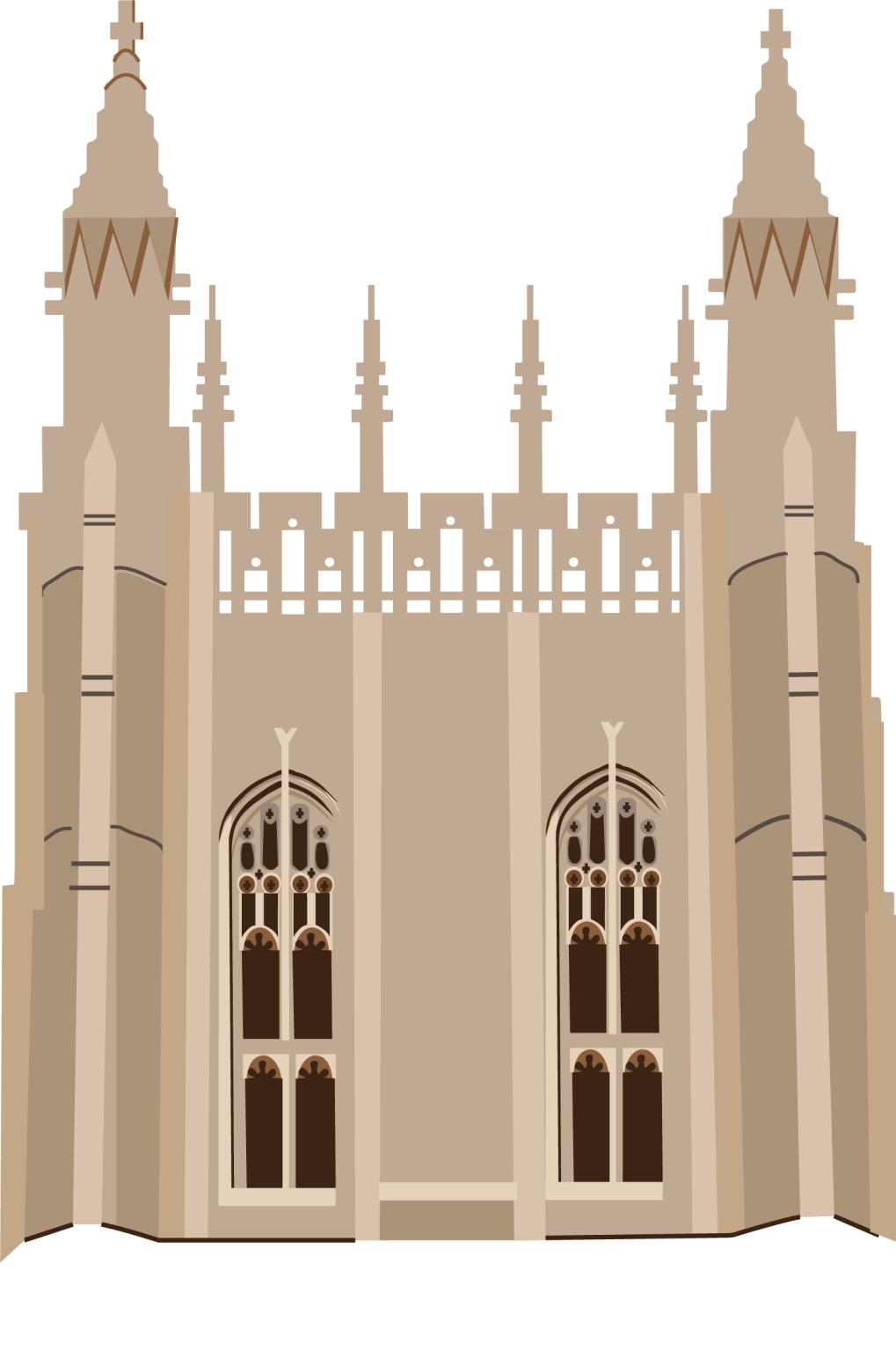
Destined to be the center of university life, Memorial Union was made to be a permanent home for Missouri spirit for almost a century.
The idea of the union was originally proposed around 1915 and approved in 1916. The plan was put on hold until after World War I, when the idea was then revived as a memorial to those lost in the war. Construction started in 1923, and Memorial Tower was finished in 1926. The north wing wasn’t completed until 1952, and the south wing wasn’t completed until 1963.
While the inside of the union has changed dramatically through the years, the outside has maintained its ornate gothic exterior. Lavished with intricate stone carvings and adorned with spires straight from the middle ages, every aspect of the building has a purpose and a story waiting to be told.
The Tower
The 143-foot tall building, designed by architectural firm Jamieson and Spearl, was modeled from an Oxford landmark, the Magdalen Tower. The collegiate gothic style of the building gives the campus an air of nostalgia, as it was created to look much older than it is. This architectural style was largely used by young universities in the early United States to give a sense of importance. Themes of America, Missouri and MU influenced the stone sculptures that cover every inch of the tower. Even though some figures aren’t even visible to the naked eye, it was believed that a building wasn’t finished until all portions were adorned.

The Spires
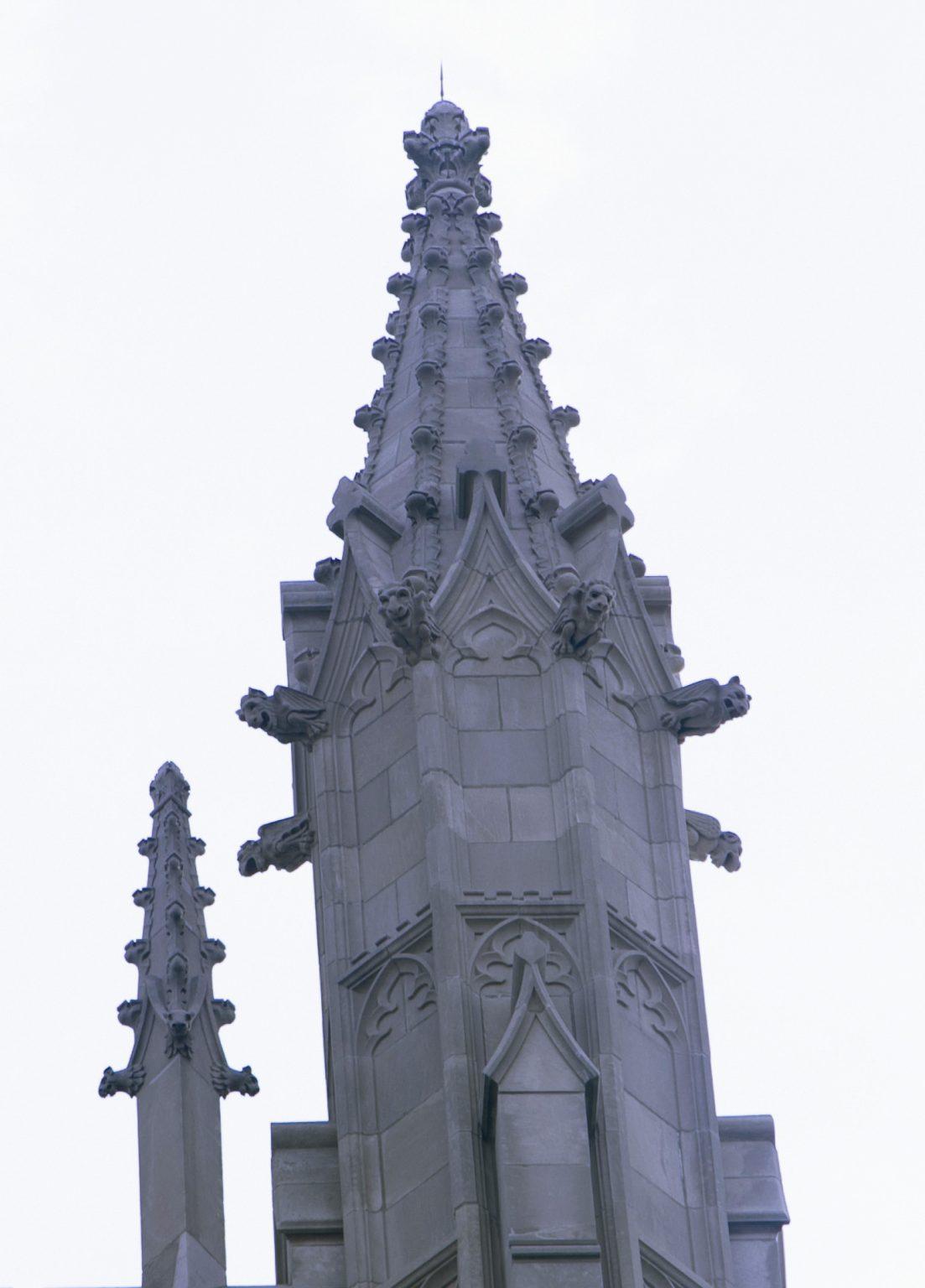
The 143-foot tall building, designed by architectural firm Jamieson and Spearl, was modeled from an Oxford landmark, the Magdalen Tower. The collegiate gothic style of the building gives the campus an air of nostalgia, as it was created to look much older than it is. This architectural style was largely used by young universities in the early United States to give a sense of importance. Themes of America, Missouri and MU influenced the stone sculptures that cover every inch of the tower. Even though some figures aren’t even visible to the naked eye, it was believed that a building wasn’t finished until all portions were adorned.

Part 2: The Midpoint
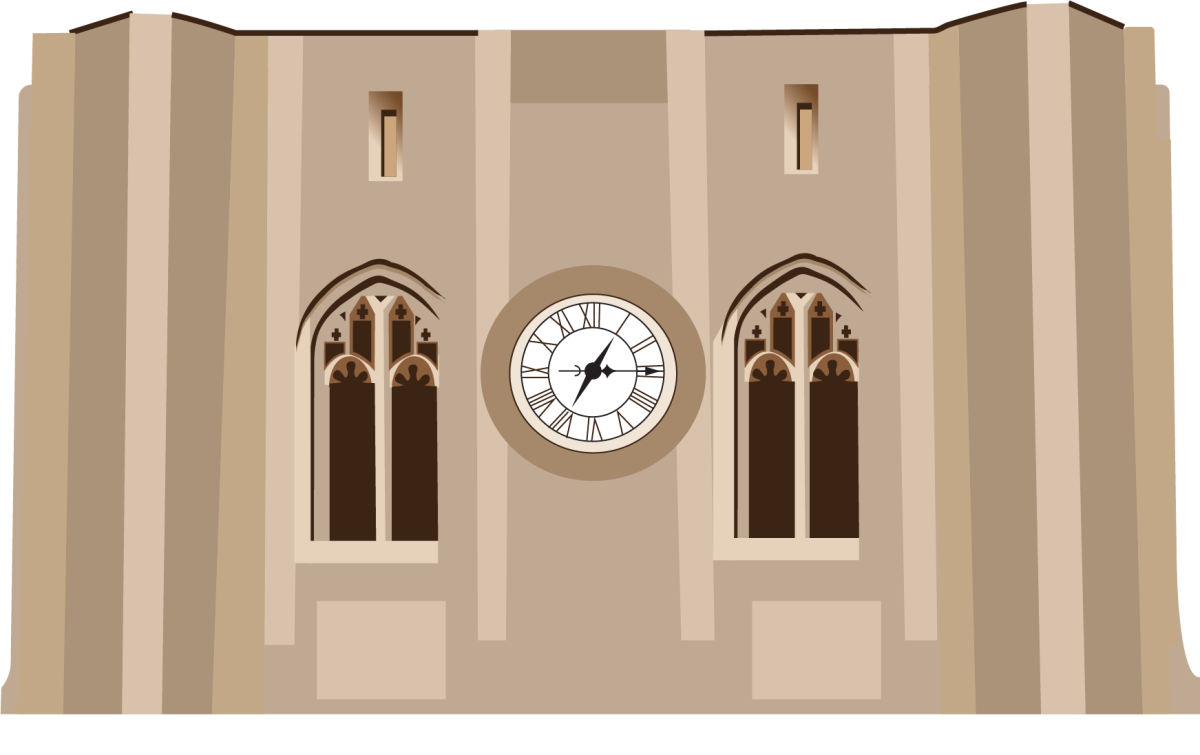
The Clock
The hourly ringing of the bell has been an MU staple since Switzler Hall housed the first bell tower on campus, but the bell ringing transitioned to Memorial Union when the clock tower was completed in 1926. Based on the mechanisms of the Big Ben Clock Tower in London, the bell and chimes were located behind the grandfather clock in the center of the tower. While no longer located in Memorial Tower (because metal bells and Missouri humidity don’t mix), the lavender-faced clock still sets the pace for university life. The Latin inscription circling the clock, “in sapientia ambulate tempus redimentes,” means “Walk in Wisdom, Redeeming the Time,” reminding students to make the most of their time at university.
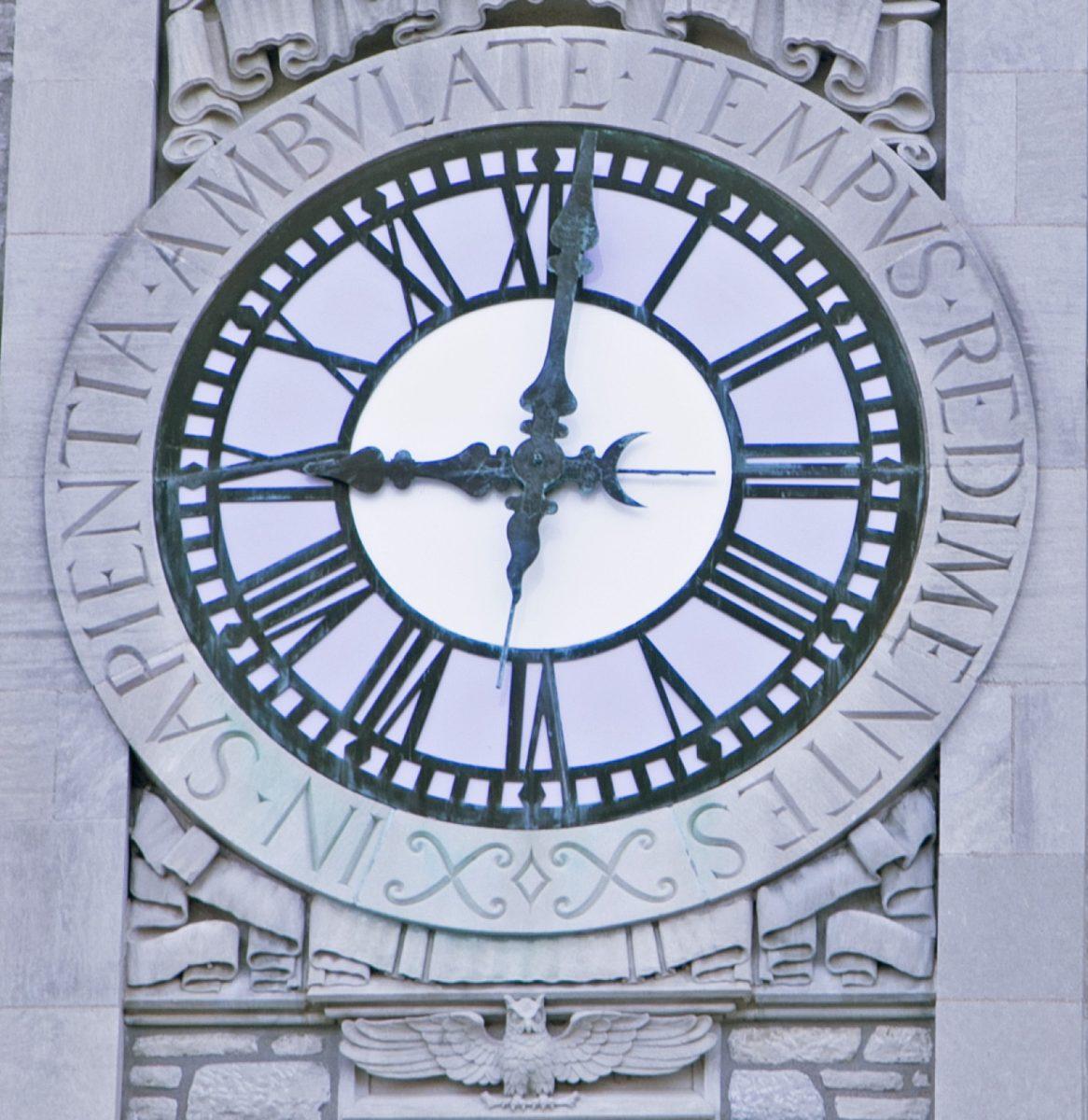
One key aspect that many people overlook on the clock is the Roman numeral four on the dial. Typically depicted as IV, the Memorial Tower Clock displays the numeral IIII.Mistake or clever distinguisher? The reason for the change is a mystery, but it is known that some forms of dials use IIII instead of IV. Regardless, it gives the clock a rare feature that even Big Ben doesn’t possess.
Directly below the clock you’ll find an owl with outstretched wings, clutching a bone with its talons. Owls have multiple meanings in antiquity, but most commonly symbolize wisdom and intuitive development.
Part 3: The Ground Floor
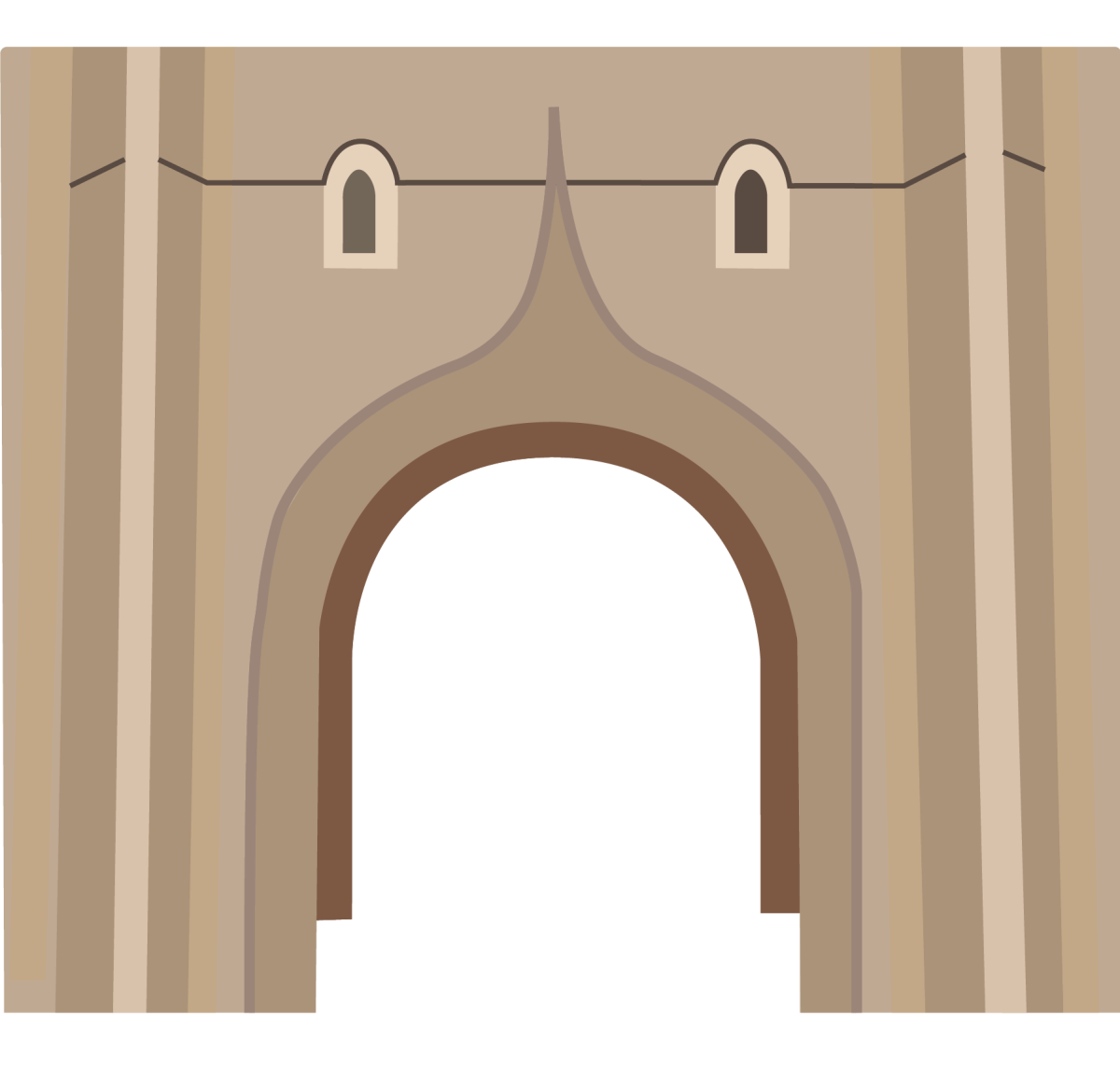
The Soldiers
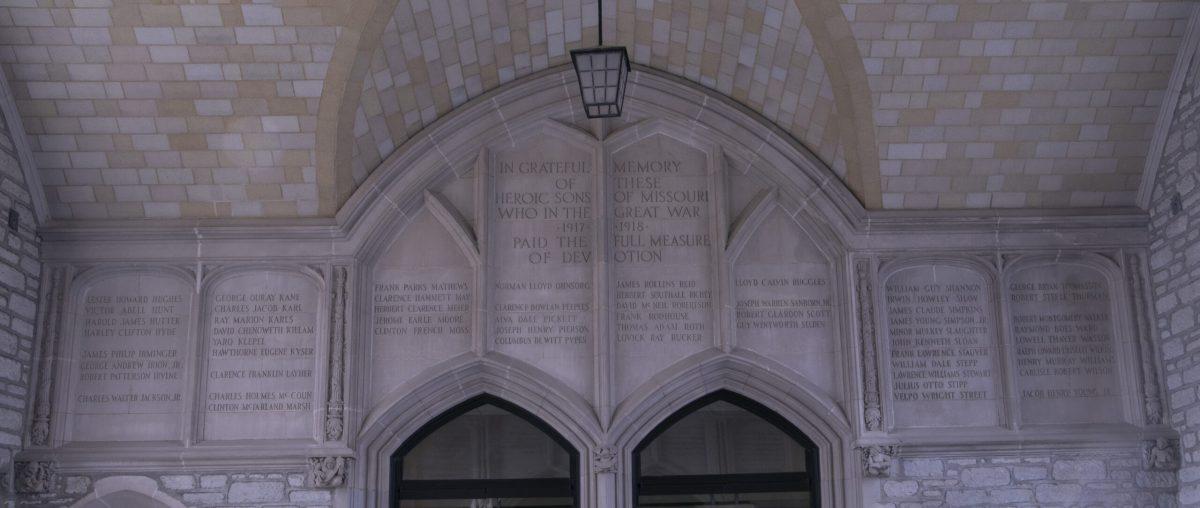
Memorial Union is, above all else, a memorial. One hundred seventeen names were inscribed beneath the archway of the building, honoring the university graduates fallen in World War I. In 1952, the names of 328 people who were lost in World War II were added. Plaques and dedications have since been displayed to honor those who have lost their lives in other ongoing wars and conflicts. It is tradition that when walking under the archway you remove your hat and speak softly as a tribute to the sacrifices made.
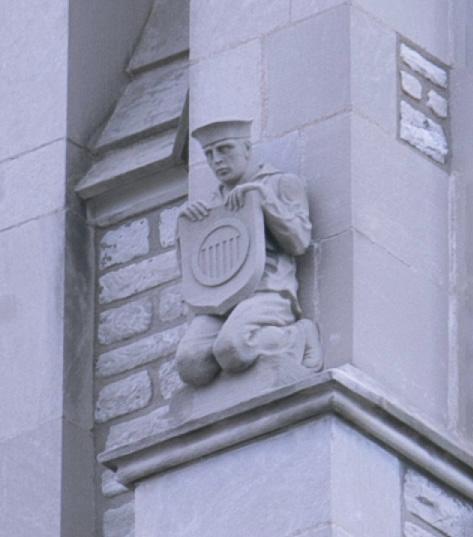
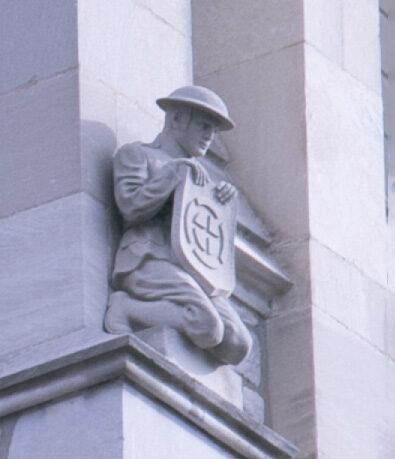
Multiple figures on the tower further serve as memorials for the soldiers. Kneeling on the tower’s four corner piers are WWI soldiers and sailors holding shields to their chest, guarding the tower. There are varying designs displayed on the shields, including the six iconic Columns, emphasizing the memorial as a tribute to the MU veterans.
The pride of MU
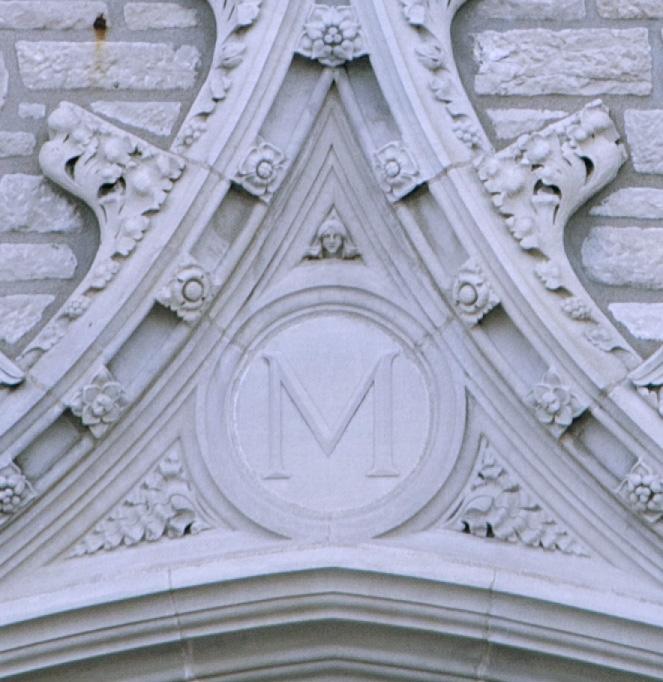
As the first public university west of the Mississippi River and, currently, the largest public university in Missouri, you’ll see various other figures on the front of the tower that reference the war and MU, using state and national themes. The references reinforce the building as an important historical monument. Directly above the archways you’ll find a circle with the letter “M,” representing Missouri and MU. Above the “M,” barely recognizable to the eye, is the small face of an angel, meant to watch over and protect those who pass through the archway.
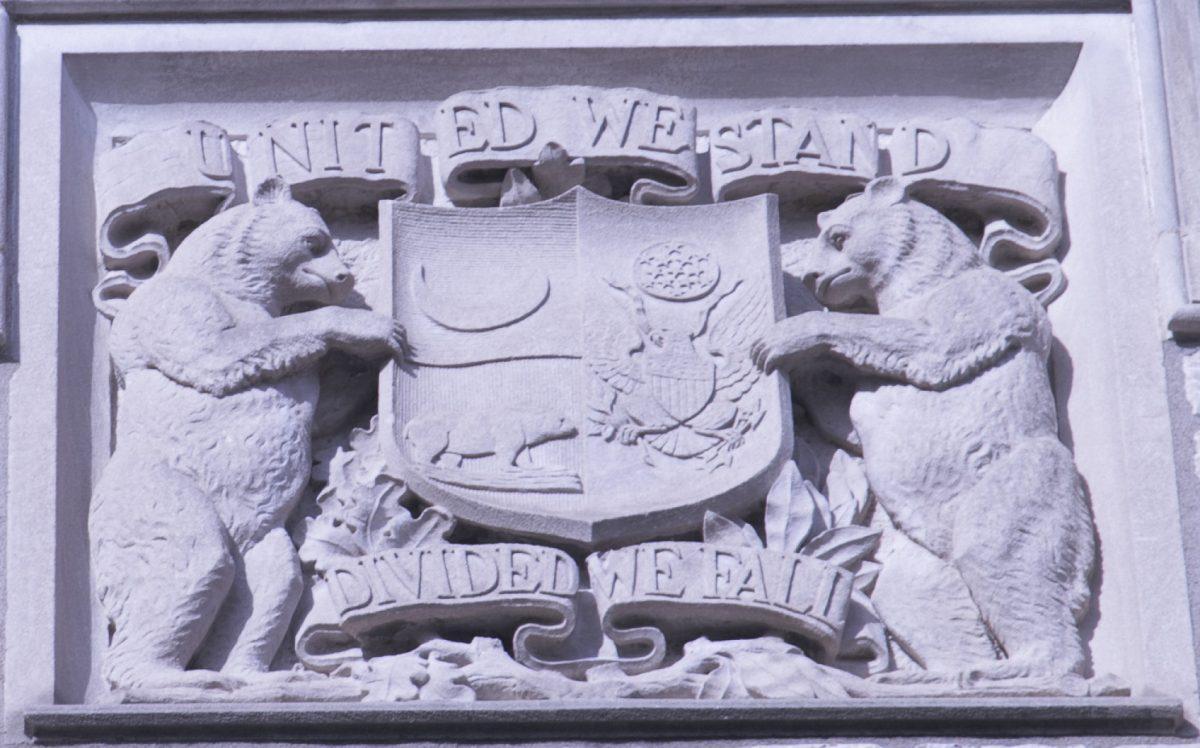
One of the most unmistakable icons displayed on the building is the U.S. Coat of Arms, partly because it’s so recognizable but mainly because of its large scale. Perched above the clock face, the emblem is accompanied by the much smaller Missouri State Seal and the University of Missouri Seal. Adding these seals to the tower marks the importance of it to the university, the state and country as a whole.
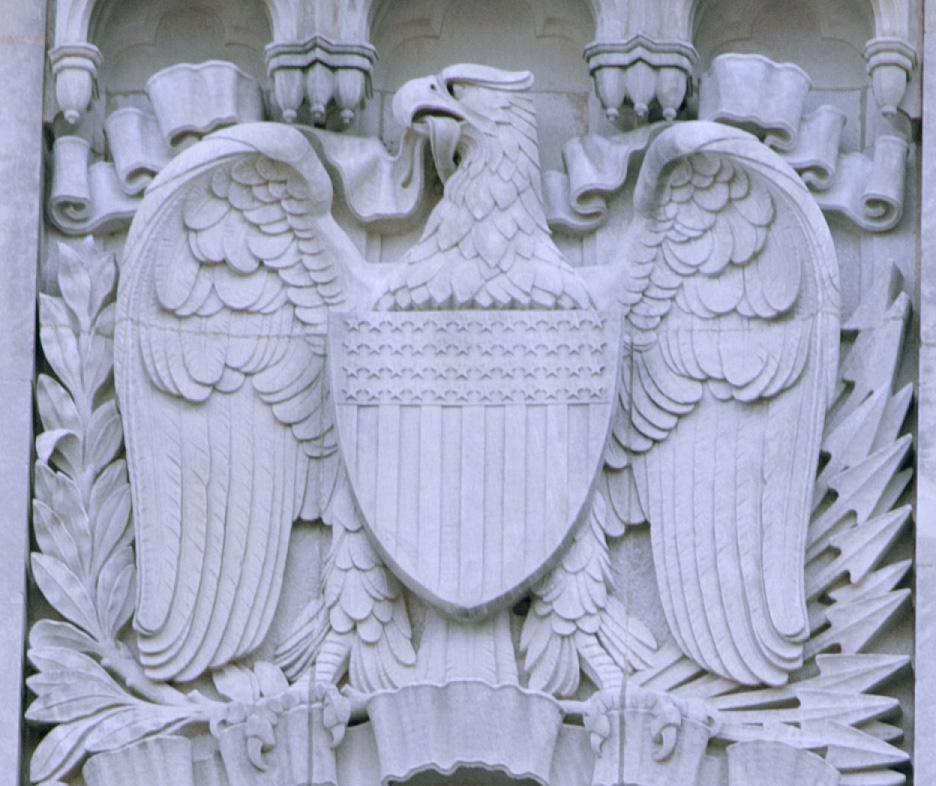
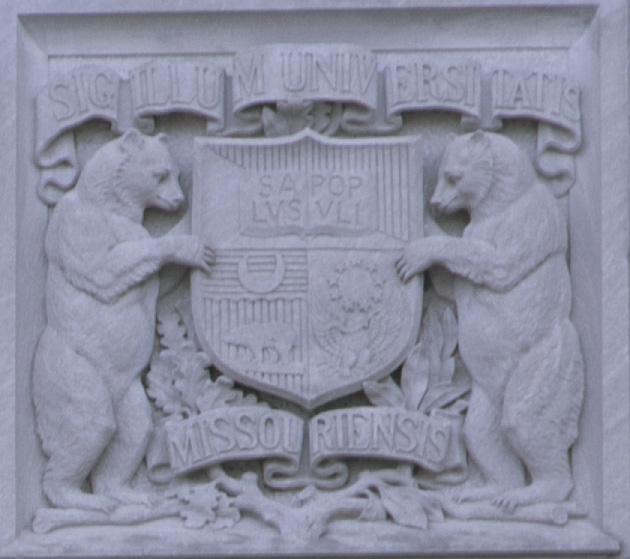
Around the state and university seals on the building are a series of small bald eagles, each holding different crests.
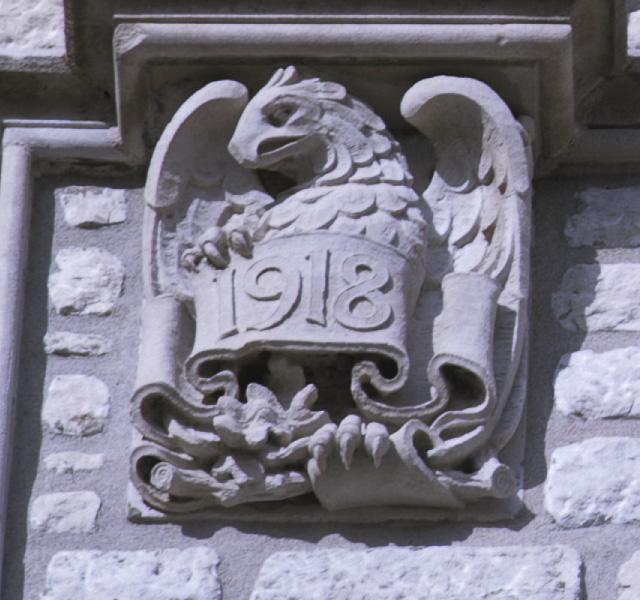
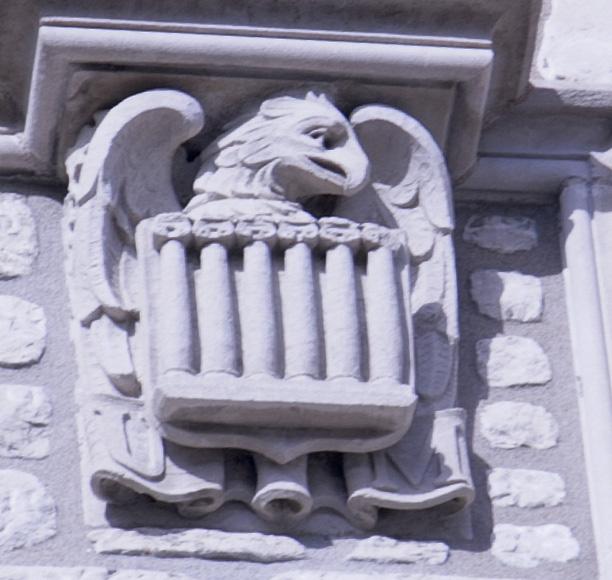
These designs pull motifs from national and MU historical themes. The first eagle holds a banner with “1918” written on it — the year WWI ended. The second eagle holds a plaque displaying the six columns of the Old Academic Hall. The third eagle holds a shield displaying stars and stripes and clutches an olive branch and arrows in its talons. The fourth eagle holds a plaque with a lily cresting on it, representing purity and rebirth. These four unique eagles each represent the different reasons the building was made — for the war, the university, the country and religion.
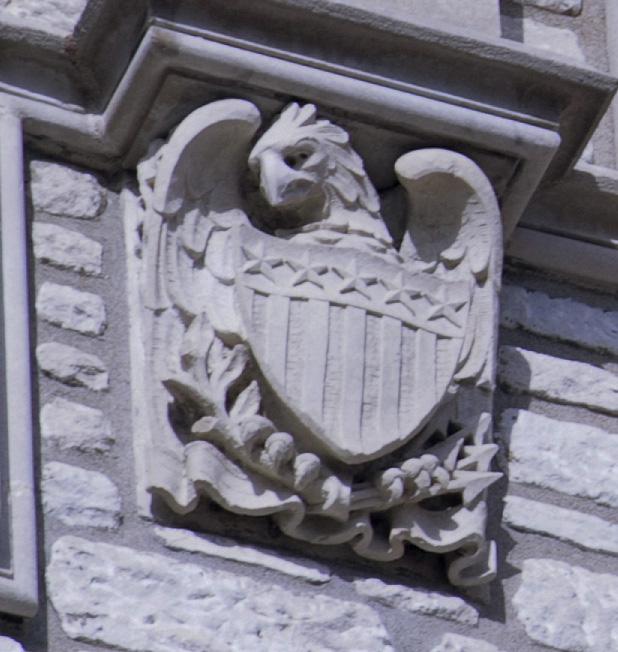
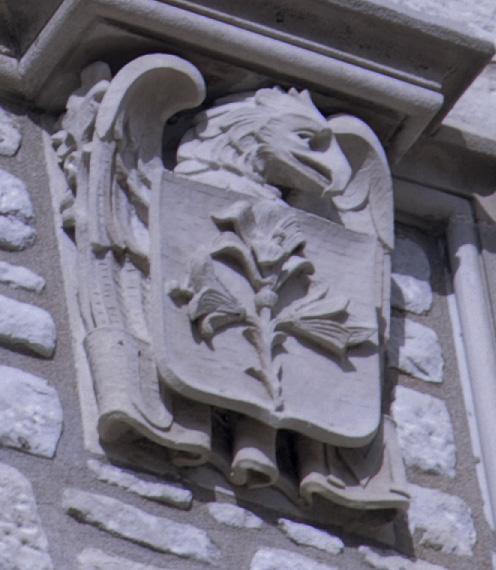
However, this is not all. There are dozens of other hidden details around the building, many that still go unnoticed. From mythological figures and religious symbols, to bears and even more gargoyles, there’s not an inch of the building that is not used as a canvas. Once you start looking, it is hard not to notice.
Edited by Egan Ward | [email protected] edited by Sterling Sewell and Mary Philip